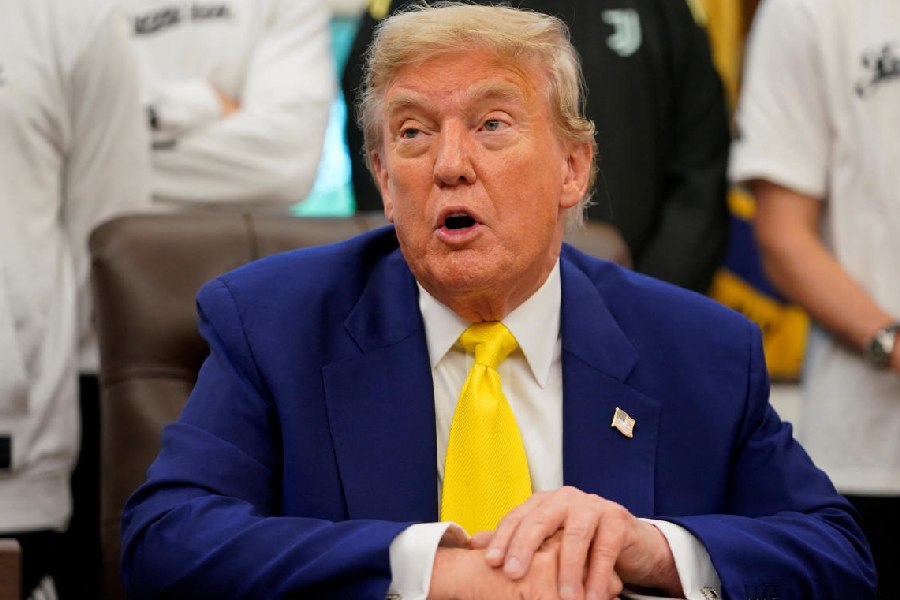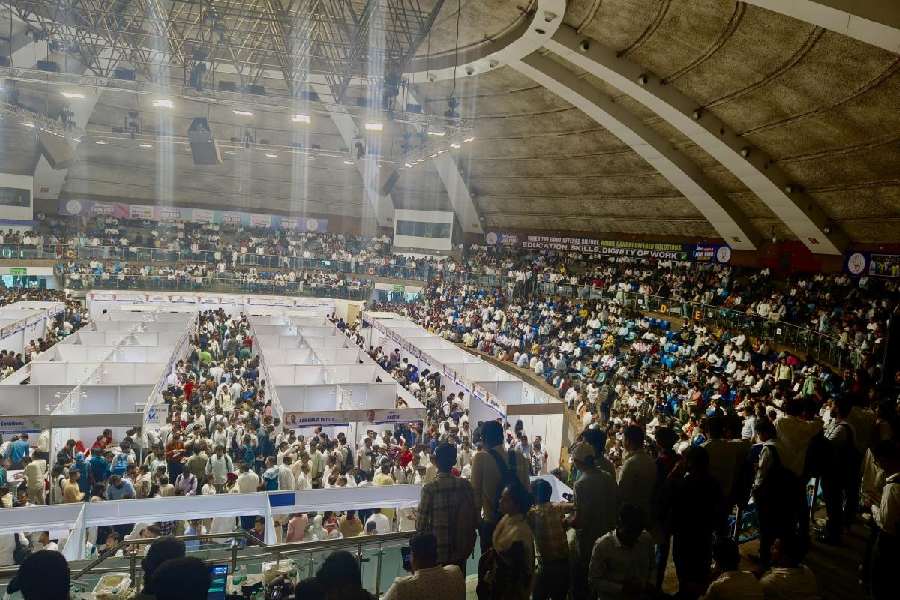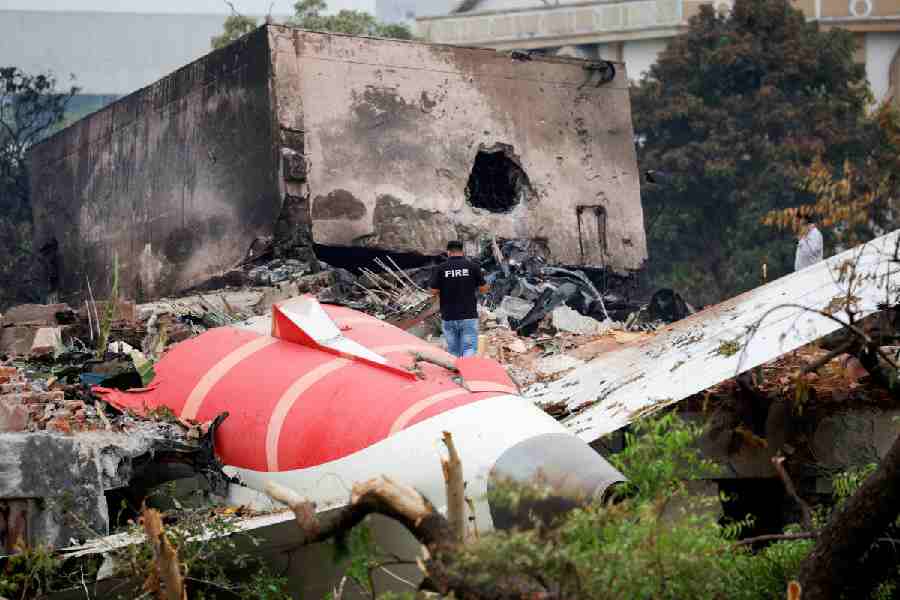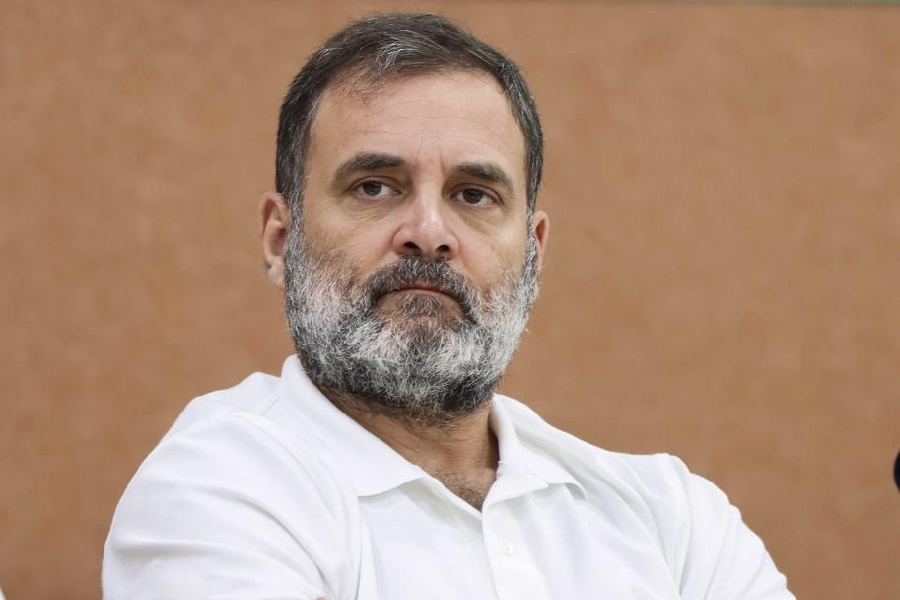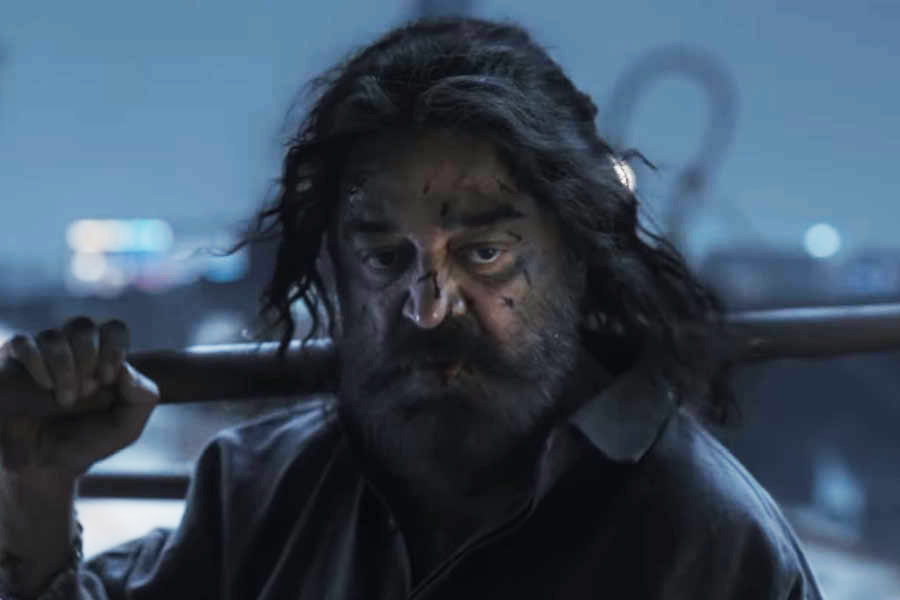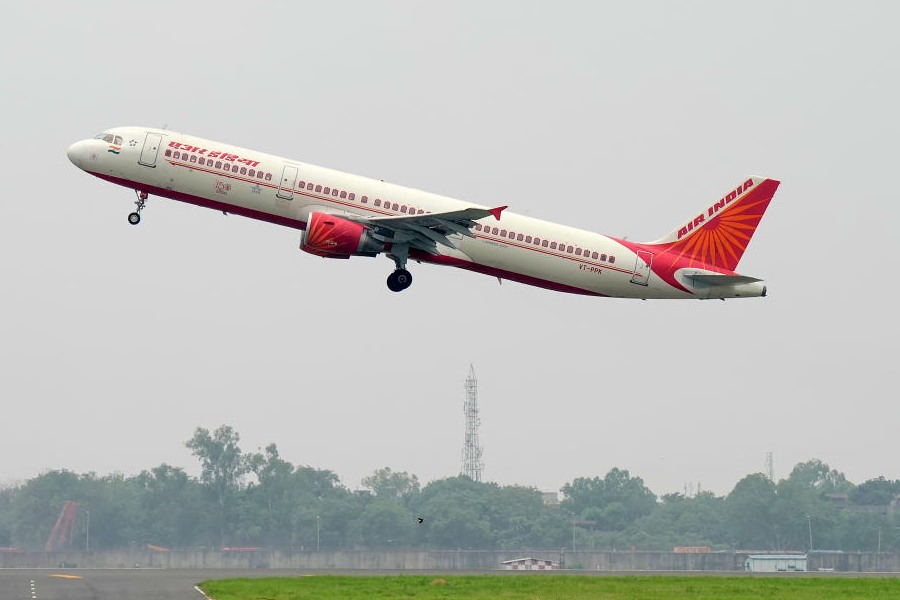 |
| Amitabh Bachchan leaves Nanavati Hospital with daughter Shweta Nanda on Saturday. (AFP) |
Oct. 11: Fans ready to wish Amitabh Bachchan a happy 66th birthday turned to prayer when the film star was admitted to hospital with abdominal pain.
The actor was taken to Nanavati Hospital in Juhu in the morning, but was later shifted to Bandra’s Lilavati Hospital where he remains in suite 1101, accompanied by wife Jaya, daughter Shweta, son Abhishek and daughter-in-law Aishwarya.
Bachchan had suffered a near-fatal stomach injury on the sets of Manmohan Desai’s Coolie in 1982. In 2005, he underwent abdominal surgery.
Through the day, speculation swirled on what may have happened to the actor who had been shooting for Teen Patti till last evening. Fans saw him walk to the ambulance at Nanavati but being carried out on a stretcher at Lilavati. He appeared in pain.
Around 8.15pm, Lilavati issued a medical bulletin that remained vague about the exact ailment.
The bulletin said Bachchan was admitted with “a history of abdominal pain, which has been relieved by medicines”. It added the actor had undergone blood tests and CT scans of the abdomen, and that further treatment would be decided after the reports arrived tomorrow morning. The hospital said it would not reveal more keeping in mind the patient’s right to confidentiality.
Abhishek told reporters his father’s condition was stable but doctors had advised him to be in hospital for 48-72 hours. “He is responding well to medication…. There is a slight improvement in his condition,” Abhishek said.
Bollywood sources said Bachchan had been diagnosed with incisional hernia and blockage of the small intestine. A TV report said doctors would try to remove the blockage by inserting a pipe through the nose tomorrow.
Gastrointestinal surgeons say that if Bachchan does indeed have incisional hernia, it could be related to the 2005 abdominal surgery.
A hernia is the protrusion of a part of an organ through a wall that holds it within a cavity. In an incisional hernia, a small bit of the intestine may protrude through a part of the abdominal wall weakened by the incompletely healed incision of previous surgery.
Such a hernia can lead to obstruction of the protruding part of the intestine, causing intense pain and vomiting. In such cases, doctors particularly look for signs of sharp twists in the protruding part that can cut off blood supply and cause gangrene.
An incisional hernia may settle down on its own in a day or two, a former AIIMS surgeon said. But a threat of gangrene could necessitate surgery to repair the hernia.
The operation, if it is not a large hernia, will involve pushing the tissue back into place and is performed through laparascopic, or keyhole, surgery.





